The American Paint Horse is a beauty to behold! Their flashy coats grab attention for miles. If you have the pleasure of riding one, get ready for a lot of jealous looks as people admire the stunning patterns of the American Paint Horse's coat.
Anyone who owns a Paint Horse will be quick to tell you that there's more to these spectacular steeds than their pleasing aesthetic. The breed's friendly demeanor warms the heart of all that touch them. Let's learn all there is to love about the American Paint Horse!
American Paint Horse Physical Characteristics
Besides its signature pinto coat, you can spot a Paint Horse by the shape of its head. Paints have small, tapered heads; their foreheads are broad compared to their muzzles. Their other facial features are small: the ears are compact but flexible, and the mouths are slight. The minute features give these horses an air of refinement and add to their beautiful aesthetic. A Paint Horse can have blue, brown, or hazel eyes.
The stately stature of a Paint Horse, along with its showy coat, is one reason for the breed's popularity. The Paint Horse stands at a medium height, and they have very pronounced withers and hindquarters. This composition gives them an appealing form. Paints have muscular necks and hind legs.

Size
Paint Horses are typically 14-16 hands (56-64 inches) tall. A healthy adult weighs anywhere between 950-1,200 pounds. Due to their muscular compositions, Paints are heavier than most full-size horse breeds.
American Paint Horse Personality
The Paint Horse is intelligent and friendly. Both of these traits lend themselves to easy training. For this reason, Paint horses are an ideal choice for a beginner that's looking for a patient and forgiving mount.
Paints are known to be very docile and relaxed. A well-tempered Paint Horse will let anyone — kids, adults, strangers — approach it without complaint. You will be hard-pressed to find an anti-social horse among this breed.
American Paint Horse History
This breed descended from the horses brought to North America by Spanish conquistadors in the 1500s. Paint Horses roamed the Western deserts and plains with wild herds until they became domesticated by Native Americans. The Native Americans admired these horses for their striking coats, believing they possessed mystical qualities.
Colonists further domesticated the breed and injected Thoroughbred and Quarter Horse blood into the line, which created the Paint Horse we know and love today.
Although American Paint Horses are closely related to American Quarter Horses, Paints were excluded from the American Quarter Horse Association's registry in the 1940s. It wasn't until 1965 that Paint Horses got their own registry and association: the American Paint Horse Association.
How to Care for a Paint Horse
Paints are a hardy breed, but they require a high level of care like any horse. Keep your Paint nourished, well-groomed, and active to ensure its health and longevity. And don't forget to visit the vet for regular checkups and vaccinations! Lots of issues can go unnoticed without the eyes of a trained veterinarian to provide ongoing assessments.
Paint Horse Training
Paints are quick to learn thanks to their intelligence, and their friendly dispositions make them easy to command. This breed learns new skills quickly, no matter their age. American Paint Horses avidly compete in both Western and English disciplines.
Start with lead training and other basic commands when the horse is young. Then, you can break them into a saddle and begin teaching them to ride. If your horse gets spooked and misbehaves, do not punish it. Try giving it a treat or some affection instead to reassure your Paint.
Nutrition and Feeding
A balance of hay, grains, pellets, fruits, and vegetables will ensure your Paint receives all the nutrients key to its health. Try to balance your horse's food and activity levels to prevent excess caloric intake and prevent weight gain. Generally, small frequent meals are better for horses than large meals.
Your adult Paint Horse should eat 15-20 pounds of hay per day. You can provide this hay for them, or they can consume it from grazing in a pasture. If you combine both feeding methods, be careful to monitor how much your horse is eating in the field to ensure you do not over or under-feed them. Add small amounts of grain to their diet to balance out the hay and keep their feeding routine as regular as possible. Mealtime consistency aids digestion and homeostasis.
Related: What Do Horses Eat? Top Feeding Guide for Healthy Horses

Coat Color And Grooming
Paints are renowned for their beautiful coat patterns. Imagine someone tossed buckets of paint (perhaps one or two colors) on a large white canvas and then wrapped it over a horse — that's what a Paint Horse looks like. Their coats feature large splotches of white and color, and two distinct coat patterns have been identified.
Tobiano
A tobiano horse has white on its back and legs. Its most definitive trait is white markings that cross the spine. Tobiano horses usually have a solid colored head with some white markings, like a blaze or star.
Overo
An overo horse has white on its belly that rarely reaches its back. So unlike a tobiano, the white never touches the spine. The head of an overo horse is usually white, and they can have blue eyes. An overo horse's legs are often dark and match the color of its body.
How to Groom
Brush your horse every day. Start with a curry comb, moving it over your horse's body in gentle, circular motions to loosen dirt and hair. Next, use a hard or dandy brush to remove the material the curry comb loosened. Take the dandy brush and move it along your horse's coat in short flicks. Finally, polish that beautiful pelt with a soft brush by applying long strokes from your horse's head to legs.
Clean the hooves every few days. Starting at the back of the hoof and moving toward the toe, use a hoof pick to remove debris. Be sure to clean the grooves around the frog, which is the V-shaped part of the hoof.
Health Problems
Paint Horses make lovely pets, but they are prone to some genetic illnesses. If you're an owner, keep an eye out for signs of distress, and don't hesitate to take your horse to the vet if it seems to be suffering.
Lethal White Syndrome
Lethal white syndrome is a genetic condition that runs in Paint Horses. Foals born with this syndrome have a white coat, blue eyes, and, sadly, underdeveloped intestines. Due to the malformation of their digestive tract, they show signs of colic (abdominal pain) and typically die within a few days of birth.
Hyperkalemic Periodic Paralysis
Hyperkalemic periodic paralysis (HYPP) is a genetic disease that causes sporadic episodes of muscle tremors or weakness. In serious cases, it can cause collapse, paralysis of airway muscles, or death. You can control this condition through exercise and diet, though only a veterinarian can help a horse during a severe attack.
Glycogen Branching Enzyme Deficiency
Glycogen Branching Enzyme Deficiency (GBED) is a fatal genetic condition that prohibits a foal's body from correctly storing glycogen. Since the body cannot cumulate sugar, the foal's brain, heart, muscles, and liver cannot function properly. These malfunctions ultimately lead to the foal's death.
How to get an American Paint Horse
The price of a Paint Horse ranges between $1,000 and $5,000, depending on the horse's pedigree, age, health, and training. Paint Horses are easy to find since they are a common breed, so check your local shelters and auctions for any available horses. Pedigree breeders and the American Paint Horse Association are other options for those looking to adopt one of these excellent steeds.
The American Paint Horse Association promotes the breed by establishing regional clubs, racing competitions, and even a non-profit foundation. Members of the APHA receive discounts on pet insurance and products from corporate partners like John Deere and Sherwin Williams. They're also eligible to register their horses in APHA shows.

More About This Horse Breed
American Paint Horses can live to 31 years with the proper care. Next to the American Quarter Horse, they are currently the second most registered horse breed in the world.
The American Paint Horse is a remarkable breed for any rider, novice or expert, that's looking for a reliable and friendly mount. Not to mention, their flashy coats are hard to pass up!

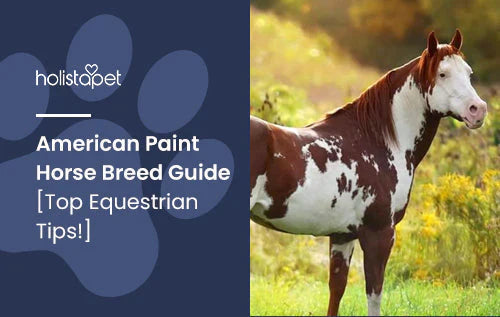
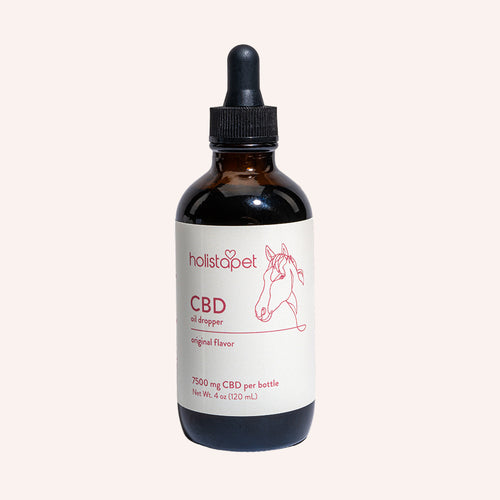 CBD Oil for Horses - Fast Acting
CBD Oil for Horses - Fast Acting
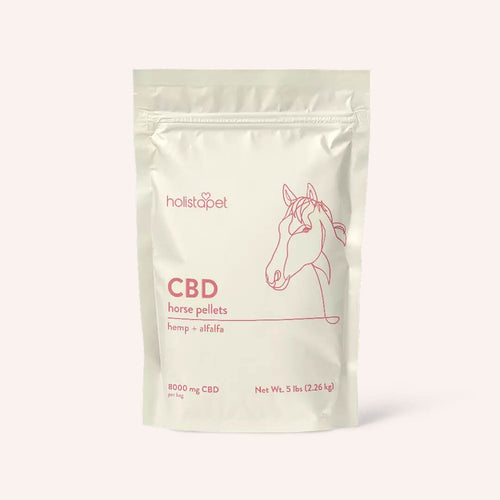 CBD Pellets for Horses - Easy Dose
CBD Pellets for Horses - Easy Dose
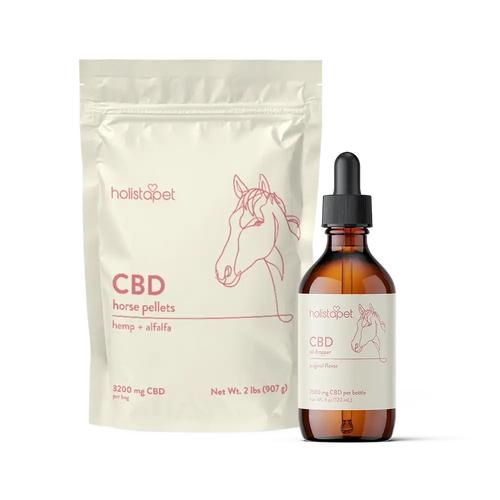 "Ridin' On My Horse" Bundle - Highly Rated
"Ridin' On My Horse" Bundle - Highly Rated


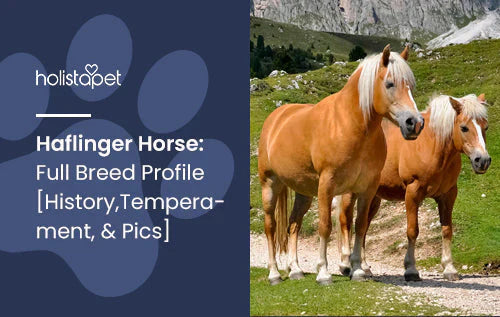
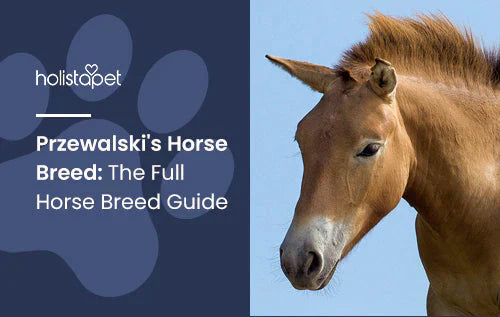

Leave a comment
All comments are moderated before being published.
This site is protected by hCaptcha and the hCaptcha Privacy Policy and Terms of Service apply.